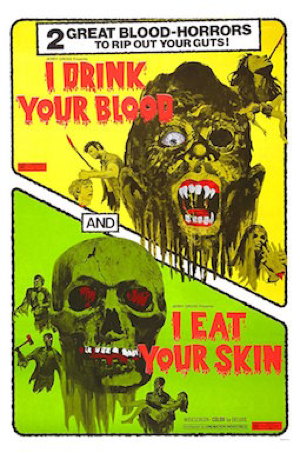1970s
The man who cut his house in half
The story goes that, in 1976, Eugene Schneider cut his house in half with a chainsaw as a spiteful way of complying with the divorce requirement that he split his assets evenly with his wife.But as you can see from the photos below, he didn't actually succeed in cutting the house in half, although he did a lot of damage with the chainsaw. It was all eventually repaired, and the house is still standing, in one piece, today. You can view it on Zillow or Google Maps.

Calgary Herald - Mar 30, 1978

Central New Jersey Home News - Aug 6, 1976


New York Daily News - Aug 3, 1976
Charges were filed against Schneider, but somewhat surprisingly (at least, I find it surprising) a jury cleared him of all wrongdoing.

Central New Jersey Home News - Feb 16, 1977
Posted By: Alex - Wed Aug 02, 2023 -
Comments (0)
Category: Architecture, Divorce, 1970s
Waiting for her husband
Another entry in our ongoing exploration of people killed unexpectedly by falling objects.
Victoria Times Colonist - Jan 21, 1976
Posted By: Alex - Tue Aug 01, 2023 -
Comments (0)
Category: Death, 1970s
Follies of the Madmen #572
Posted By: Paul - Sun Jul 30, 2023 -
Comments (0)
Category: Advertising, Junk Food, Wimps, Milquetoasts and Cowards, 1960s, 1970s
Portable Fish Farm
Text from The Los Angeles Times (Oct 1, 1971):An international flap over fish.
Artist Newton Harrison's "Portable Fish Farm" is an ecological work about growth and life cycles. Six large tanks contain lobster, crayfish, oysters, brine shrimp and catfish, dominating a large upper room of the government-owned gallery.
The catfish—200 of them—were shipped here live from El Centro, Calif. Harrison wanted to demonstrate man's ability to haul food great distances and harvest it in a new environment. Some catfish were to lay eggs; some were to mature during the showing. Others were to be cooked at an opening feast for 250 guests, to prove Harrison's idea that "all art is about survival."
Fish, to be cooked, must be killed. Harrison wanted people to see the process as part of his exhibition.
The killing part hooked the British press. Advance stories ignored almost everything except the "ritual execution" of catfish. That news triggered a reaction nearly incomprehensible outside animal-loving England.
Confused readers called papers to protest the "bludgeoning" of innocent cats. The Royal Society for the Prevention of Cruelty to Animals was moved to "deplore" any public catfish killing.
British comedian Spike Milligan, famous for his work on "The Goon Show," carried his protest to the gallery itself. He threw a hammer through the front window Thursday morning.
More info: The Harrison Studio
Images from Google Arts & Culture:



Posted By: Alex - Sat Jul 29, 2023 -
Comments (3)
Category: Art, Food, 1970s
Quasi at the Quackadero
Info on the creator and more videos here.
Posted By: Paul - Sun Jul 23, 2023 -
Comments (0)
Category: Anthropomorphism, Pop Art, Surrealism, Cartoons, 1970s
I drink your blood, I eat your skin
The best-titled double feature ever. Info from Wikipedia:I Drink Your Blood was marketed and released as a double feature with Del Tenney's previously-unreleased 1964 film Zombies, which Gross had acquired and retitled I Eat Your Skin.

Posted By: Alex - Tue Jul 18, 2023 -
Comments (1)
Category: Movies, Exploitation and Grindhouse, 1970s
Potato Fish, Potato Bug, Potato Bird
Posted By: Paul - Mon Jul 17, 2023 -
Comments (2)
Category: Anthropomorphism, Food, Toys, Advertising, 1970s
Follies of the Madmen #570
Posted By: Paul - Wed Jul 12, 2023 -
Comments (0)
Category: Animals, Anthropomorphism, Advertising, Air Travel and Airlines, 1970s
Journal of the Identical Lunch
Journal of the Identical Lunch, published in 1971, records the experiences of artist Alison Knowles and her friends all eating an identical lunch — "a tunafish sandwich on wheat toast with lettuce and butter, no mayo and a large glass of buttermilk or a cup of soup" — though not all at the same time. Knowles herself reportedly ate this identical lunch every day at a New York diner.Copies of the book are now quite rare, so if you want one (perhaps as an investment? The price will surely only go up) it'll cost you at least $200, and perhaps as much as $500.
More info: artnet.com, MoMA.org


Posted By: Alex - Mon Jul 10, 2023 -
Comments (1)
Category: Art, Food, Books, 1970s
Freak auto accident
More info: Motorsport Memorial
Florida Today - May 31, 1976
Posted By: Alex - Sun Jul 09, 2023 -
Comments (2)
Category: Death, 1970s, Cars

| Who We Are |
|---|
| Alex Boese Alex is the creator and curator of the Museum of Hoaxes. He's also the author of various weird, non-fiction, science-themed books such as Elephants on Acid and Psychedelic Apes. Paul Di Filippo Paul has been paid to put weird ideas into fictional form for over thirty years, in his career as a noted science fiction writer. He has recently begun blogging on many curious topics with three fellow writers at The Inferior 4+1. Contact Us |




